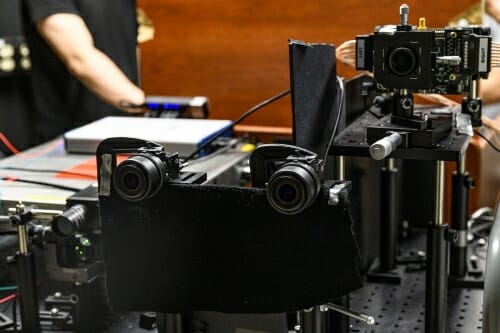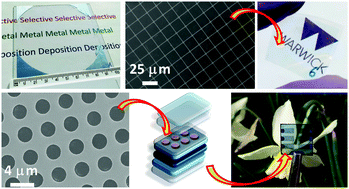(Stanford researchers build a heat shield just 10 atoms thick to protect electronic devices)
2019/8/16 アメリカ合衆国スタンフォード大学

・ スタンフォード大学が、電子デバイスの熱を遮断する原子薄の断熱シールドを開発。
・ 電子デバイスのホットスポットにシート状に積み重ねた原子薄の 2D 材料数層が、その 100 倍の厚さのガラスシートに匹敵する断熱性を提供。薄型の熱シールドは、さらに小型化した電子デバイス製造の可能性を拓くものと考える。
・ スマートフォンやラップトップ等の電子デバイスが発する余剰な熱は、デバイスの機能不全やリチウム電池の爆発の原因となる可能性がある。そのため、ガラス、プラスチックや空気層を利用してマイクロプロセッサーのような発熱するコンポーネントを断熱し、損傷回避やユーザーの安全性の維持を図っている。
・ スマートフォン等が発する熱の実態は、不可聴の高周波音。電流としてワイヤを流れる個々の電子が、デバイスを通過する際にその材料の原子に衝突して振動させる。大量の電子が鐘の乱れ打ちのように原子に衝突して起こる膨大な量の振動による雑音が、不可聴の高い周波数にて材料中を移動する過程において、熱として感知できるエネルギーを発生させる。
・ このように、熱は音の一形態であるとし、電子デバイスの断熱には音楽録音スタジオで外部の雑音を遮断する分厚いガラス窓の原理が応用可能と考えたが、エレクトロニクスをより薄くする現在の試みには適さない。そこで、薄さの異なる各ガラスシートの間に空気層を挟んだ複層ガラス窓より着想を得た。
・ 同断熱シートは、SiO2/Si 基板上に 2D 材料のグラフェン、セレン化モリブデン(MoSe2)、二硫化モリブデン(MoS2)およびセレン化タングステン(WSe2)の原子薄の層をそれぞれ積層した 4 層のヘテロ構造。僅か原子 10 個分の薄さだが、各層を通過する原子の熱振動を弱めてエネルギーの大部分を損失させる。
・ 同断熱シートの実用化には、電子コンポーネントの製造過程でのスプレー処理や原子層の積層等の大量製造方法の開発が必要。極薄断熱シートの開発には、材料の振動エネルギーを電気や光のように制御する方法の発見の狙いもある。固体の物体中の熱を音の一形態と認識するに従い、新しい研究分野であるフォノニクス(phononics)が出現している。
・ 本研究は、Stanford Nanofabrication Facility、Stanford Nano Shared Facilities、米国立科学財団 (NSF)、Semiconductor Research Corporation、米国防高等研究計画局(DARPA)、米空軍研究所 (AFOSR)、Stanford SystemX Alliance、クヌート&アリスウォレンバーグ財団、Stanford Graduate Fellowship プログラムおよび米国立標準技術研究所(NIST)が支援した。
URL: https://news.stanford.edu/2019/08/16/atomically-thin-heat-shield-protects-electronics/
(関連情報)
Science Advances 掲載論文(フルテキスト)
Ultrahigh thermal isolation across heterogeneously layered two-dimensional materials
URL: https://advances.sciencemag.org/content/5/8/eaax1325
<NEDO海外技術情報より>
Abstract
Heterogeneous integration of nanomaterials has enabled advanced electronics and photonics applications. However, similar progress has been challenging for thermal applications, in part due to shorter wavelengths of heat carriers (phonons) compared to electrons and photons. Here, we demonstrate unusually high thermal isolation across ultrathin heterostructures, achieved by layering atomically thin two-dimensional (2D) materials. We realize artificial stacks of monolayer graphene, MoS2, and WSe2 with thermal resistance greater than 100 times thicker SiO2 and effective thermal conductivity lower than air at room temperature. Using Raman thermometry, we simultaneously identify the thermal resistance between any 2D monolayers in the stack. Ultrahigh thermal isolation is achieved through the mismatch in mass density and phonon density of states between the 2D layers. These thermal metamaterials are an example in the emerging field of phononics and could find applications where ultrathin thermal insulation is desired, in thermal energy harvesting, or for routing heat in ultracompact geometries.
Figures

Fig. 1 Optical and STEM characterization of vdW heterostructures.



